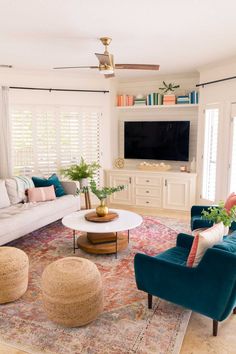Redefining Apartment Designs for the Remote Work Era
Read latest blogs and articles from Housystan

The Information mentioned here was last updated on:
20/1/2026Redefining Apartment Designs for the Remote Work Era
As the world has adapted to changes brought on by the pandemic, one of the most significant shifts has occurred in the sphere of work. With many businesses embracing remote work, homes have transformed into multifunctional spaces, and apartment designs are evolving to better accommodate this new norm. Let's explore how apartment designs are being redefined for the remote work era.
The Rise of the Home Office
- Verified Tenants/Buyers
- Unlimited Property Listing
- Zero subscription/charges fee
More Than a Desk and Chair
Remote work has led to the creation of dedicated home office spaces within apartments. Initially, many people improvised by working from dining tables or couches, quickly discovering the downsides of such setups. Today, apartments are increasingly incorporating dedicated office spaces that go beyond just a desk and chair. These areas are designed with considerations like ergonomics, lighting, soundproofing, and storage solutions to ensure productivity and comfort.
Flexibility in Design
To meet the varying needs of remote workers, apartment designs are becoming more flexible. Murphy beds, convertible tables, and modular furniture are making smaller spaces multifunctional. These designs allow living rooms or bedrooms to seamlessly transform into productive work areas without compromising the aesthetic or comfort of the home.
Enhanced Connectivity and Tech Integration
Tech-Friendly Spaces
In the age of Zoom meetings and constant connectivity, apartments now integrate more technology-friendly features. Built-in USB ports, enhanced internet infrastructure, and smart home systems are becoming standard in many new developments. These features aim to provide seamless connectivity for uninterrupted work and communication.
Improved Acoustics
Noise can be a significant distraction when working from home. To combat this, apartment designs are increasingly focusing on soundproofing. This includes using materials that dampen sound, such as carpets, curtains, and acoustic panels. Some designs even incorporate double-glazed windows and insulated walls to maintain a quiet working environment, giving remote workers the peace they need to focus.
Emphasis on Natural Light and Air Quality
The Importance of Daylight
Access to natural light can significantly affect mood and productivity. Modern apartments are emphasizing large windows, open layouts, and strategically placed mirrors to maximize daylight exposure. This helps create a more inviting and energizing space, which can enhance both work performance and overall well-being.
Prioritizing Air Quality
Good air quality is essential for creating a healthy indoor environment. Plants and improved ventilation systems are common features in new apartments, ensuring that fresh air circulates throughout the space. This focus on air quality not only promotes good health but also improves concentration and productivity, making it easier to work effectively from home.
Incorporating Wellness and Relaxation Areas
Balancing Work and Life
With homes serving multiple functions, it's crucial to maintain a healthy balance between work and relaxation. Apartment designs are now incorporating wellness areas, such as reading nooks, meditation corners, and even small indoor gardens. These spaces provide a necessary retreat from work-related stress and promote mental well-being.
Access to Outdoor Areas
Many new apartment buildings are also emphasizing access to outdoor spaces, such as balconies, terraces, and communal gardens. These areas offer an essential break from the indoor environment, allowing remote workers to recharge and enjoy fresh air without leaving their homes.
Adaptability for Future Needs
Anticipating Change
As the future of work continues to evolve, adaptability is a core focus in apartment design. Architects and developers are prioritizing features that allow spaces to be easily reconfigured to meet changing needs, whether that’s adapting to more time spent at home, accommodating hybrid work models, or welcoming guests.
Sustainable Design
Sustainability is not just a trend but a necessity in modern apartment design. Features like energy-efficient appliances, sustainable building materials, and intelligent climate control systems cater to environmentally-conscious residents and can also reduce living costs. As more people work from home, there's a greater need for energy-efficient living spaces that minimize the environmental footprint.
Community and Connection
Enhanced Shared Spaces
Even as people spend more time at home, the sense of community remains vital. Apartments are offering enhanced shared spaces like coworking lounges, libraries, and communal kitchens. These areas foster community interaction, allowing residents to connect while working or relaxing.
Events and Networking Opportunities
Some apartment complexes are organizing events, workshops, and networking opportunities tailored to remote workers. This proactive approach helps build a sense of community and provides valuable opportunities for socialization and professional development.
Conclusion: A New Era of Living Spaces
The redefinition of apartment designs reflects the broader changes in how we live and work. By focusing on adaptability, connectivity, wellness, and community, the modern apartment is more than just a living space. It has become a dynamic environment that supports the diverse and evolving needs of remote work, fostering a new era of integrated living solutions. Through thoughtful design, apartments are not just adapting to the present but paving the way for the future of urban living.